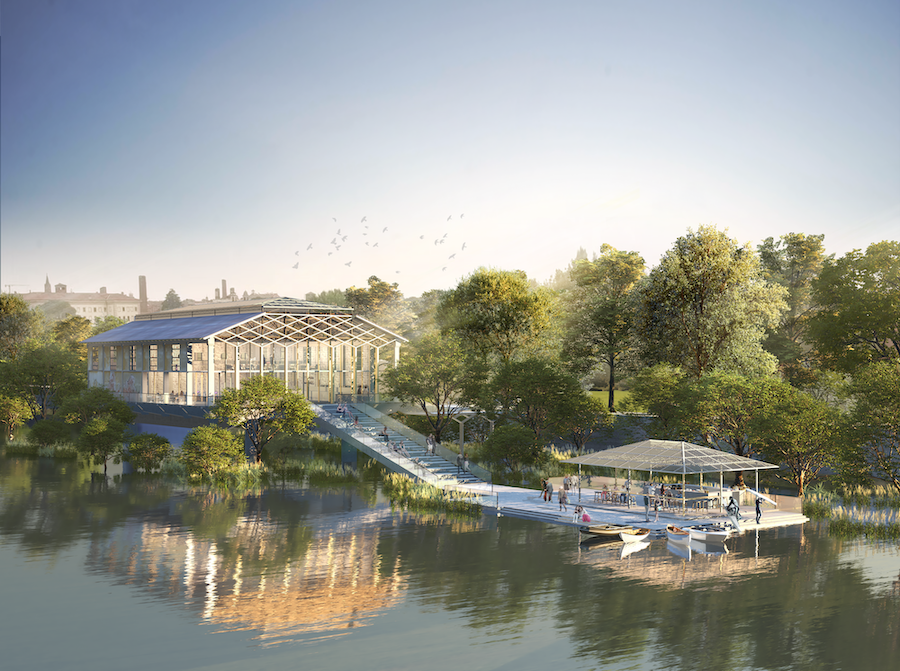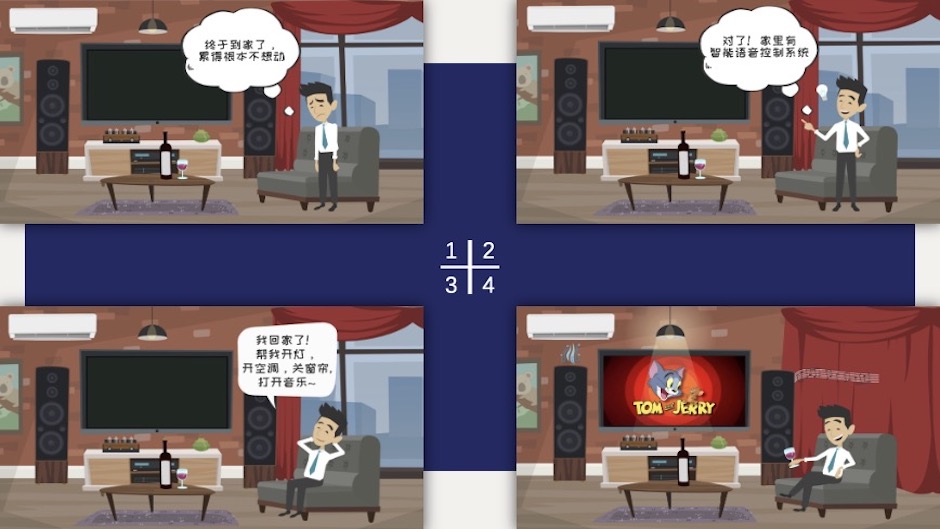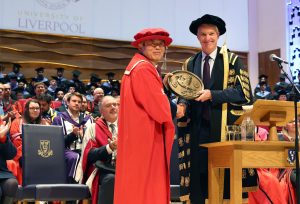16 Mar 2022
In a recent TerraViva competition, Chao Tang, a Year Three architectural engineering student at Xi’an Jiaotong-Liverpool University, was awarded an honourable mention for his design project Ticino Meet+, which transformed an abandoned hydroplane hangar in Pavia, Italy, into a community hub on the river.
TerraViva Competitions is an international platform that hosts a series of design and architecture competitions.
For the Hangar Ticinum competition, there were over 300 entrants from all over the world, competing for first, second and third prize, as well as four gold mentions and 10 honourable mentions.
Built in the 1920s, the hangar, called Idroscalo, still stands quietly on the bank of the Ticino river. The architecture is valuable historically and artistically but the structure has been steadily decaying for decades and is in urgent need of recovery.
To revitalise the hangar, the Pavia government organised this competition to ask participants for their ideas to turn the hangar into something that can be used by the community. The winning entry will be displayed in a local exhibition in April.
A floating community hub
Tang’s entry, Ticino Meet+, introduces new structures and functions while keeping the original structure of Idroscalo. The revamped hangar caters to the needs of both citizens and tourists by providing spaces for relaxation, conferencing, dining, film screenings, reading, exhibitions and workshops.
“We transformed the original seaplane ramp into a large urban staircase that serves as a gateway to outdoor activities on the river. It is attached to a floating platform that can be used as an outdoor café or bar," Tang says.
 The ramp of the original Idroscalo (top) becomes a staircase that leads to a floating platform (bottom)
The ramp of the original Idroscalo (top) becomes a staircase that leads to a floating platform (bottom)
“We noticed that the geometric carvings on the original building façade had lost their original flavour due to the lack of maintenance. We drew on the geometric patterns for a steel structure that forms an equally characteristic yet contemporary façade,” he explains.

 The geometric-patterned façade of the original Idroscalo (top) is reimagined in steel
The geometric-patterned façade of the original Idroscalo (top) is reimagined in steel
“We also employed a minimalist palette of beige to enhance the industrial atmosphere of the building, allowing the subtle modernist furniture to contrast with the rough old walls and flooring, and thus bringing a visual collision between the old and the new.”

 Comparison between abandoned Idroscalo and rendering after renovation
Comparison between abandoned Idroscalo and rendering after renovation
Transforming old architecture
Tang explains that his design was inspired by some renovation projects in China, particularly that of No. 1500 Yangshupu Road in Yangpu District, Shanghai, as well as the transformation of an old glass factory into office space in Shenzhen.
He believes that the renovation of old architecture should be like making a software upgrade patch – updating the old structure and adding new functions while retaining the original style.
“For these abandoned buildings, merely repairing them would be boring, and demolishing them would not be environmentally friendly. The best way is to preserve the architecture’s original characteristics while adding new structures to meet new functional needs. This can add vitality to the old buildings and at the same time manifest the inheritance of social history and culture,” he says.

Returning to simplicity
Tang says that the experience of participating in the competition was like a microcosm of his studies at XJTLU: a transformation from the initial pursuit of flashy designs to the later attempt of bringing architectural style back to simplicity, and to truly understand the space shaped by architecture.
“In my second year, I was obsessed with the architectural style that’s popular on the internet, and my designs tended to be very giddy. Later, under the guidance of my teachers, I started experimenting with simply designing a column, bench, or pavilion, and began to appreciate the charm of structure and materials,” he says.
“In the process of designing Ticino Meet+, I was constantly trying to restore the building to a simple style. The knowledge gained from the architectural engineering programme also allowed me to keep in mind the feasibility of the design so that the outcome can be simple and close to life.”
By Yi Qian
Translated by Ziying Shi
Edited by Patricia Pieterse
Images courtesy of XJTLU Department of Civil Engineering
16 Mar 2022
RELATED NEWS

Two undergraduate teams win top prizes at CIMC
In the finals of 2021 Siemens Cup China Intelligent Manufacturing Challenge (CIMC), two undergraduate teams from Xi’an Jiaotong-Liverpool University won the ...
Learn more







